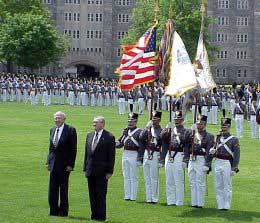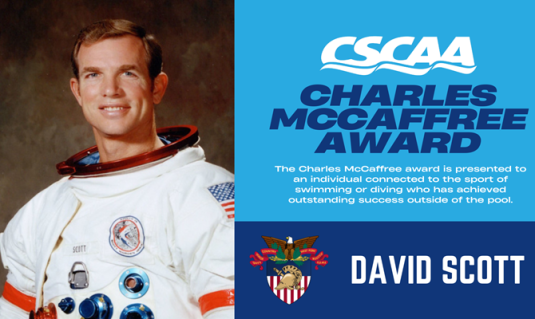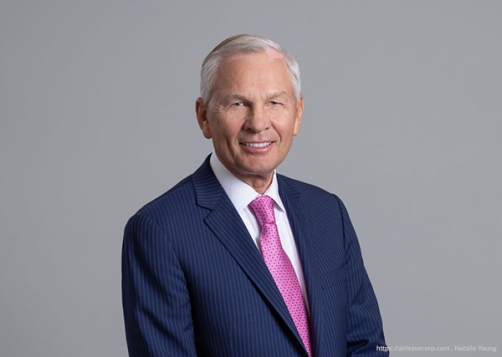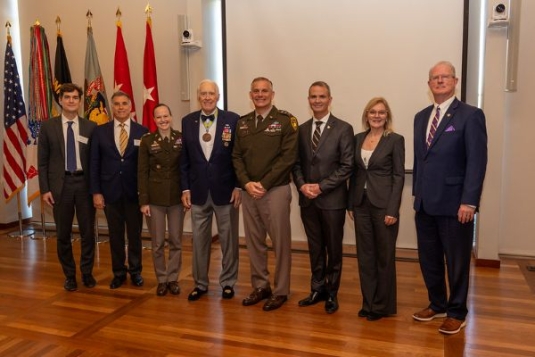The West Point Association of Graduates (WPAOG) has named the 2000 recipients of the Distinguished Graduate Award. This annual award has been bestowed upon those West Point graduates whose character, distinguished service, and stature draw wholesome comparison to the qualities for which West Point strives, in keeping with its motto: “Duty, Honor, Country.” View photos here. The 2000 Distinguished Graduate Award Recipients are:
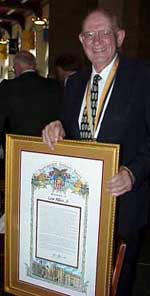
Gen (R) Lew Allen, Jr. ’46
In the years since General Lew Allen, Jr. graduated from the Military Academy, he has rendered extraordinary service to the United States Air Force and to the Nation. Through his contributions to the improvement of military technology, his service at the highest levels in the department of defense, and his advancement of America’s space program, he has earned a distinguished place in the history of this century. His life has exemplified outstanding devotion to the principles expressed in West Point’s motto: Duty, Honor, Country.
Read More
Already wearing the pilot’s wings he had earned as a cadet, Lew Allen graduated on 4 June 1946 and was commissioned a Second Lieutenant, U.S. Army Air Corps. Almost immediately, he found his thinking and professional skills focused on the cold-war confrontation between the United States and the Soviet Union. Following his B-25 transition training, he was assigned to the Strategic Air Command. Then, after completing the Weaponeer (nuclear weapons specialist) School, he was posted to Carswell Air Force Base, where he served as a pilot, a Weaponeer and an instructor of Weaponeers. This was his introduction to atomic weapons and the role of deterrent forces at the operating level.
The next decade and a half brought a shift from operational to scientific work, and it also resulted in a record of brilliant achievement. From 1950 to 1954 he was a student at the University of Illinois, where he earned both a master’s degree and a Doctorate in Physics. He was then assigned as a nuclear weapons scientist at Los Alamos National Laboratory in New Mexico where he remained until 1957. In this position, he successfully designed and carried out tests to determine the lethality of weapons used to defend against nuclear attacks.
Next, he served as Science Advisor to the Air Force Special Weapons Laboratory at Kirtland Air Force Base where his experiments included the “Argus” series of upper-atmosphere nuclear tests in the South Atlantic. Aimed at determining if trapped electrons in the Earth’s magnetic field due to nuclear explosions would have serious military effects, the tests detected no such effects, particularly none to communications. Finally, in 1961 he was posted to the Office of the Deputy Director of Defense, Research and Engineering where he first became involved with work on classified satellites and where one of his notable projects was to help determine the radiation effects on photographic film in orbit for the CORONA Program.
A half-decade of high-level staff work followed these assignments, first as Director of Advanced Plans in the Special Projects Office of the Secretary of the Air Force in Los Angeles from 1965 until 1968, and then until 1971 as Director of the Space Systems Staff, Office of the Secretary of the Air Force, in Washington. In both positions, he assisted the Secretary of the Air Force in managing the nation’s highly sensitive classified space projects, and his contributions to their success was crucial to establishing American dominance in space technology.
He returned to operational work in 1971 when he was reassigned to Los Angeles as Director of the Office of Special Projects, Office of the Secretary of the Air Force. Here he was responsible for the procurement, launching, and on-orbit operation of the Nation’s space fleet, which played a key role in America’s effort to collect information about the Soviet Union and other potential enemies of our country.
In 1973, by now a Lieutenant General, he became the Director of the National Security Agency, and during the next four years, oversaw its worldwide intelligence collection and processing operations. Beyond the success of his agency’s intelligence gathering, one of his finest achievements was his elimination of potentially unethical or illegal practices on the part of the NSA. So effective was he that a Congressional investigation of all American intelligence agencies gave the NSA a completely clean bill of health, declaring it a model of ethical behavior.
In 1977, General Allen received a fourth star and was placed in charge of the Air Force Systems Command, which was responsible for the research, development, and acquisition of the Air Force’s aircraft, space systems and boosters, ballistic missiles, electronic systems, armament and munitions systems, and the operation of a large number of research laboratories. It was a huge responsibility, but an even greater one soon followed, for in 1978, after serving briefly as Vice Chief of Staff, he was selected by the President and confirmed by Congress as Chief of Staff, United States Air Force.
As a member of the Joint Chiefs, he contributed to deliberations on a wide variety of significant issues, such as the details of the SALT II agreement and the proper balance between long-range missiles and bombers. Within the Air Force itself, his overhauling of an antiquated personnel rating system had a great positive impact on morale and job performance. He also insured that the B-1 bomber, sidelined during a period of force reductions, came back into the inventory. He kept the Global Positioning System (GPS) satellite program on track when skeptics were trying to kill it. Under his leadership “Stealth” technology achieved maturity, and he initiated both the F-117 fighter and the B-2 bomber programs. These, along with the improvements in electronic intelligence gathering that he had overseen when in charge of the NSA, were to prove decisive in the Gulf War.
Upon his retirement from the Air Force on 30 June 1982, the National Aeronautics and Space Administration asked General Allen to take over as Director of the Jet Propulsion Laboratory at the California Institute of Technology in Pasadena and also serve as the Institute’s Vice President. This immensely responsible position placed him in the forefront of the Nation’s unmanned space exploration program. During his eight years at its helm, the Jet Propulsion Laboratory participated in a breath-taking array of scientific projects: the Voyager encounters with Uranus and Neptune; the repair of the Hubble Telescope; the Magellan launch and the first synthetic aperture radar maps of Venus that resulted from it; and the beginning of the Galileo’s voyage to Jupiter.
From 1989 to the present, General Allen has served as a member of the President’s Foreign Intelligence Advisory Board (PFIAB) and the Intelligence Oversight Board, and once again, he has proved his solid worth to the Nation. In this immensely responsible position he has consistently provided seasoned, expert, and unbiased advice. For example, during the Bush Administration he helped evaluate intelligence support to the military in Desert Storm; and during the current Administration he did the same for operations in Somalia.
Throughout a career of uncommon devotion to his country and its Air Force, General Allen was dedicated to the principals and ideals reflected in the motto of West Point. Accordingly, the Association of Graduates of the United States Military Academy takes great pride in presenting him the 1999 Distinguished Graduate Award.
John A. Hammack
Chairman and CEO
Gen (R) Robert C. Mathis ’48
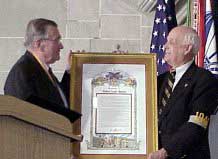
As a distinguished combat airman, outstanding Air Force leader, educator, and preeminent program manager, and as an acknowledged expert in the research and development of highly technical Air Force weapons systems, Robert Couth Mathis has served his country in positions of great responsibility with distinction and an extraordinary sense of duty throughout a career spanning four decades.
Read More
Robert Mathis graduated from the Military Academy in 1948 and was commissioned in the Air Force. He underwent pilot training at Randolph Air Force Base, Texas, and Williams Air Force Base, Arizona, and in December 1949 he was assigned as a fighter pilot to the 51st Fighter Group at Naha Air Base, Okinawa. In 1950, as American troops were committed to combat in Korea, Lieutenant Mathis was posted to the 16th Fighter-Interceptor Squadron as a ground-based Forward Air Controller with the infantry. Cut off behind enemy lines when his unit was overrun by the Chinese, he managed to evade capture and rejoin his unit, although he was wounded by enemy fire in the process. He later returned to the combat theater to fly F-80 jet fighters and T-6 “Mosquito” aircraft.
Captain Robert Mathis reported to the United States Naval Academy where he served a three-year tour as an instructor in Electrical Engineering. He then began a long and fruitful association in research and development with his assignment to Rome Air Development Center at Griffiss Air Force Base, New York. As Program Director, then as Technical Director, and later as Officer in Charge of the Trinidad, British West Indies Test Site, Major Mathis directed the construction and operation of an experimental radar station designed to track ballistic missiles and satellites — the forerunner of the critically important Ballistic Missile Early Warning System. Widely recognized as an expert in radar technology, Robert Mathis continued to be assigned to the Air Force’s most difficult and vital projects over the course of his career.
In 1963, Major Mathis was awarded his doctorate in Electrical Engineering from the University of Texas. He reported to the Air Force Weapons Laboratory at Kirtland Air Force Base, New Mexico, where he was Project Engineer and later, Chief, Electrical Branch. In 1966 he was selected to attend the Industrial College of the Armed Forces and upon his graduation in 1967, Colonel Mathis was assigned to the Air Force Advisory Team in Vietnam, where as Senior Advisor to the Republic of Vietnam Air Force at Binh Thuy Air Base in the Mekong Delta, he flew 222 combat sorties in fighter and attack aircraft.
Following his tour in Vietnam, Robert Mathis was assigned to the Office of the Director of Defense Research and Engineering, Office of the Secretary of Defense. His duties as assistant to the Deputy Director lasted one year. Colonel Mathis was then selected to command Rome Air Development Center, Air Force Systems Command at Griffiss Air Force Base, New York.
Two years later, General Mathis was assigned to Wright-Patterson Air Force Base, Ohio, where he became Director for the F-111 Fighter Program at a time when that controversial project was in serious difficulty. His superior management skills enabled the program to get back on track. Assigned as Project Manager for the F-15 fighter program when technical problems were placing both the F-15 and F-16 programs in jeopardy, General Mathis once again drew on his superb technical ability, foresight, and extensive knowledge of military tactics and air operations to ensure the successful development of an airplane that has remained the world’s most advanced fighter for more than twenty years.
In 1976, Major General Mathis was appointed Deputy Chief of Staff, Systems, Headquarters Air Force Systems Command at Andrews Air Force Base, Maryland. From 1977 until 1979, Lieutenant General Mathis was Vice Commander, Air Force Systems Command. The following year found him serving as Vice Commander, Tactical Air Command at Langley Air Force Base, Virginia. In March 1980, Robert Mathis was promoted to the rank of General and appointed Vice Chief of Staff, United States Air Force. He retired from active duty in 1982, having spent 38 years in uniform.
Among his many decorations, General Mathis has been awarded the Defense Distinguished Service Medal, the Air Force Distinguished Service Medal, the Silver Star, the Legion of Merit with oak leaf cluster, the Distinguished Flying Cross with oak leaf cluster, the Air Medal with eleven oak leaf clusters, the Air Force Commendation Medal, the Purple Heart, and many foreign awards.
Since retiring from the Air Force, Bob Mathis has been active in military, business, and philanthropic endeavors. Appointed to the Air Force Study Board, he provided invaluable advice to the Air Force Systems Command on technical matters.
When Bob Mathis retired from active duty, he had one goal in mind, and that was to establish a charitable facility to provide therapeutic recreational programs for disabled people of all ages. Over the past several years, the Eagle Mount program has grown to encompass three locations and last year more than 1,500 people with severe disabilities participated and as many volunteers were trained. A special program called Big Sky Kids has been created for children with cancer. Among the activities featured are adaptive skiing, horseback riding, aquatic therapy, golf, rafting, and family camping.
General Mathis also found the I Am Third Foundation as the governing body for Eagle Mount. He established Eagle Pass Engineering, a consulting firm whose profits provide a source of funds for Eagle Mount; and he created TMA, an electro-optical company that also assists the I Am Third Foundation financially.
As important as his work is in organizing firms to help in funding his charitable work, more important and the key to the success of the Eagle Mount program is Bob Mathis’ selfless commitment and unbounded enthusiasm. The nationally recognized Eagle Mount program has been a model for similar activities in many other states.
Throughout a long and distinguished career in the service of his country, General Mathis’ every action has mirrored the words of the West Point motto: “Duty, Honor, Country.” His achievements as a superlative Air Force commander and renowned expert in many technical areas made substantial and permanent contributions to the national security of the United States. As a philanthropist, his integrity, leadership, and uncommon concern for the welfare of his fellow man have set a standard of performance and conduct against which future generations of West Point graduates will be measured.
Accordingly, the Association of Graduates of the United States Military Academy takes great pride in presenting General Mathis the 1999 Distinguished Graduate Award.
John A. Hammack
Chairman and CEO

